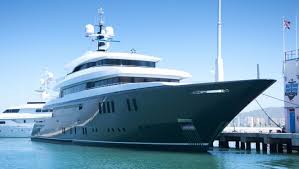
Here are three emerging risks you need to know about commercial marine insurance in 2017.
Larger vessels. Many of the vessels under construction today are super large container ships. “We’re living in a world where economies of scale are very important,” “Some of the vessels that are getting built now are so enormous that they bring a whole new set of exposures, like the wake damage they can create if they are maneuvered incorrectly. Problems can be significantly heightened than if you had a vessel that’s half the size.”
Cyber. This is a big concern for more modern vessels that use computerized equipment, It’s the same old story—people who want to do harm can hack into the systems and create havoc with the navigation and communication systems,. Consider a large refrigeration vessel that carries fish, fruit or frozen products: “A hack could mess with the refrigeration systems, which are controlled by computers.”
So far, the commercial marine market has appeared largely unconcerned about cyber exposure. “I don’t think we’ve seen the really big nasty shock loss yet,. “And I hope we don’t, but some major loss may happen at some point that’s going to really school everyone. Then, I think you’re going to see many more products tailor-made to cover that kind of exposure.”
And when ships eventually begin to follow the lead of driverless cars, cyber will become an even bigger concern. “There’s constant discussion about drone ships—a shift in the future to unmanned vessels,” Hills says. “We’re quite a long way off from that, but that will create its own set of problems.”
Climate change. As weather events become more severe, the impact on harbors, ports, terminals and other marine territories could be staggering. “Whatever you feel about it—whether you believe it’s natural or manmade—climate change is going to create some challenges for commercial marine,” Vaughan says.
The problem is particularly worrisome in the Arctic, where melting ice caps make it possible for more vessels to venture further north. “There’s going to be more shipping going on up there, and that’s going to create new activity,” Vaughan explains. “If you have an accident, if you have a fire on board or collision or sinking, the arctic environment makes it more challenging to get rescue crews up there, to work on saving vessels, to work on saving lives.”
Normally, vessel owners can reap benefits from working hard to meet standards like the U.S. Coast Guard’s Sub Chapter M regulations for inspection and safety. “I was a broker for many years, and I’m a great believer that if your clients are complying with more stringent safety guidelines, you should make a point of driving that home to your insurers,” Vaughan says. “There’s been a lot of good work done on essentially improving the risk to the market.”
But in the absence of the type of infrastructure of more seasoned shipping areas, “there are going to be some new exposures there that probably are going to need to be worked out,” Vaughan says.